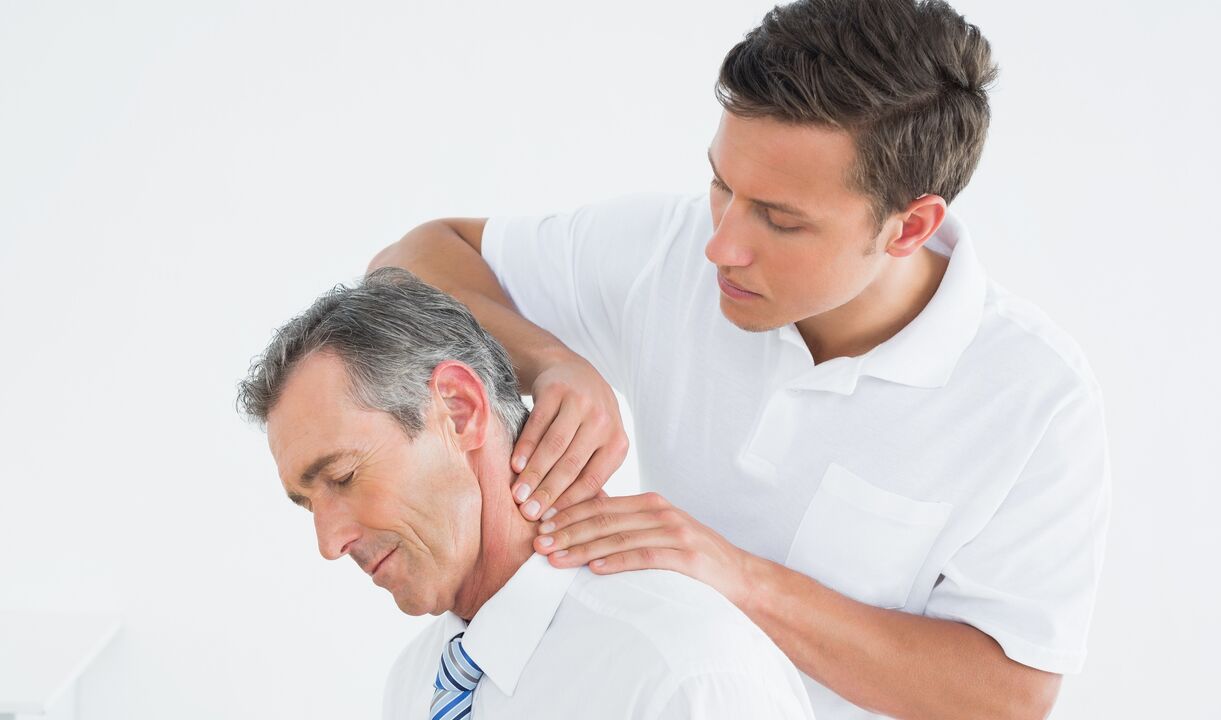Damage to the back and neck, heavy physical activity, sedentary lifestyle, pregnancy, old age - all this leads to diseases of the spine, the support of the human body. The symptoms of osteochondrosis, cervical, thoracic or lumbar, are different, so do not ignore any, even subtle symptoms. The sooner treatment is started, the sooner it will heal. If you see the first signs of the disease, consult a doctor and get tested.
What is osteochondrosis
One of the most diagnosed diseases of the spine is osteochondrosis, the symptoms of which occur in every third person after 35 years. It mainly affects overweight elderly people, former athletes or workers whose professional activities are associated with heavy loads. According to statistics from recent years, it is clear that the disease is getting younger. Girls and boys who prefer a sedentary lifestyle are no longer surprised by doctors with complaints of back pain.
Osteochondrosis is a disease of the spine with degenerative-dystrophic damage to the intervertebral discs. When left untreated, the vertebrae themselves begin to collapse, leading to disability, atrophy and paralysis of the extremities. Such a problem can also result in a stroke, sciatica, kyphosis, bulging. At the first signs of the disease should seek the help of a doctor.
Each degree of this dystrophic disorder of the spine is characterized by its own symptoms and signs. In total, there are four stages. In the first stage, pathological changes occur, characterized by dehydration and a decrease in the height of the intervertebral disc. Second, the sagging of the vertebral muscles and ligaments is stabilized, the diagnosis of spondylolisthesis (disc displacement, curvature). The third stage is characterized by the appearance of prolapses and protrusions of the discs. In the final stage, the vertebrae become deformed, on which bone protrusions - osteophytes - grow.
Symptoms
Signs and symptoms of osteochondrosis depend on the stage of its development. The type of disease also plays an important role. Osteochondrosis affects different parts of the spine: neck, thoracic, lumbar. Some of the patient's symptoms may not be related to the spine, such as heart or headaches, numbness of the fingers and toes. The patient also complains of neck pain or chest pain. It is very important to seek help from the hospital. The treatment of the disease lasts about 3 months, plus a year for rehabilitation.
The most common symptoms of osteochondrosis:
- back pain between shoulder blades;
- dizziness;
- feeling of a lump in the throat;
- nausea;
- loss of sensation in the limbs;
- high temperature;
- alignment of limbs.

Cervical osteochondrosis
If we take into account the symptoms of the type of disease, problems with the cervical spine due to proximity to the brain are dangerous. There is a partial overlap of the blood vessels that complete the bleeding. Symptoms of cervical spine osteochondrosis include:
- dizziness;
- clouding in the eyes;
- noise in the ears;
- "drifts" while walking;
- pain in the back of the head, arms, shoulders.
Thoracic osteochondrosis
This type of disease affects the heart, as a result of which the patient begins to complain of the following symptoms:
- chest, back, shoulder pain;
- heart pain;
- angina;
- feeling of a lump in the throat;
- shortness of breath;
- shortness of breath;
- harmony of hands and feet.
Lumbar osteochondrosis
A disease that affects the lower spine causes problems in the pelvic organs. Sexual function is impaired. Symptoms of lumbar osteochondrosis:
- coccyx, sacrum, lower back pain;
- spasms of the muscles of the thighs, legs, hips;
- shooting in the legs;
- limb alignment;
- poor joint mobility;
- exacerbation of diseases of the genitourinary system.

Symptoms of osteochondrosis
This concept refers to osteochondrosis, which develops in two parts of the spine, for example, in the cervicothoracic type of the disease. In this case, the patient will first feel painful symptoms that appear in one part of the back, and then elsewhere, ie. the location of the pain will move. In this case, the patient can be diagnosed with a disorder of the cardiovascular system, and even take medication to treat the problem, which can not be done without a medical examination.
Symptoms of osteochondrosis
Depending on the effect of the disease, doctors distinguish four groups of syndromes, each of which is characterized by its own symptoms. Osteochondrosis syndromes include:
- static syndrome. This concept refers to the change in the shape of the spine. There is a violation of posture: one person begins to bend, bend, lower one shoulder under the other. Scoliosis appears.
- neurological syndrome. The disease affects the nervous system. The person complains of tingling and numbness. Neurological symptoms turn into complications in the form of paralysis or convulsions.
- vascular syndrome. Here we are talking about the compression of vessels by the processes of the vertebrae. This condition is often observed in the cervical form of the disease. The result is circulatory disorders, oxygen starvation of the brain, blurred vision, dizziness, nausea, hearing and vision loss. Chronic ischemia of internal organs is observed with thoracic or lumbar osteochondrosis.
- trophic syndrome. It is characterized by insufficient nutrition of tissues with essential nutrients. As a result, ulcers, inflammation and other defects appear on the skin.

The first signs of osteochondrosis
In the early stages of the disease, as well as in the final stages, the patient does not feel any discomfort. Only a doctor can diagnose the problem at this stage of development, for example, when another disease is diagnosed or during a medical examination. Diagnostic methods are:
- radiography of the spine in two projections, if necessary, radiography of a single vertebra;
- magnetic resonance imaging (determination of intervertebral disc herniation, assessment of the condition of the spinal cord);
- discography (examination of the intervertebral disc);
- electrophysical examination (determination of the degree of damage to the nervous system).























